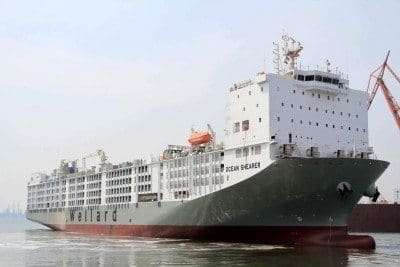On paper, the official elimination of a 10 percent tariff on Australian feeder/slaughter cattle exports to China in January 2019 shapes as the kind of trigger live exporters have been seeking to increase export activity since the trade opened in mid 2015.
However, the trade says that while any reduction in tariff barriers is welcome, there are several reasons why the 10pc tariff reduction secured under the China Australia Free Trade Agreement (ChAFTA) will not deliver a sudden or immediate boost to the trade at the start of next year.
A key reason is that the 10pc reduction will not occur as a single 10pc reduction on January 1, but rather, as the final, incremental stage of a gradual phase-in that has been occurring since ChAFTA was signed on December 20, 2015.
When ChAFTA came into effect the tariff immediately decreased by 2pc (easing from 10pc to 8pc).
Further 2pc reductions followed in January 2016, January 2017 and January 2018.
The tariff on Australian feeder/slaughter cattle imports to China now stands at just 2pc, meaning the effect on January 1, 2019, will be to reduce the cost of Australian cattle for Chinese importers by that amount.
While any reduction in tariff barriers is clearly of value, that incremental change is unlikely to have a significant effect on the overall trading dynamics, given some of the larger barriers that still constrain the trade.
These include an 11 percent Value Added Tax that continues to be imposed on imported cattle in China, where local cattle production is also subsidised.
Unfavourable currency dynamics, China’s continued resistance to allowing the import of feeder cattle, and its requirement that slaughter cattle imports be processed within 14 days of import, continue to add up a “pretty tough trading environment”, in the words of one exporter.
The Australian live export industry is continuing to appeal to the Chinese Government to start feeder cattle imports and to remove the 14 day requirement on slaughter shipments, which it argues creates enormous operational pressure and marketing uncertainty for Chinese importers.
“Any tariff reduction is helpful, however trading conditions remain challenging,” Wellard Head of China Initiatives and Executive Director, Kanda Lu, said.
“Imported cattle still attract 11pc VAT, which local cattle can gain an exemption from.
“When you combine that with a relatively strong Australian cattle price and a Yuan which is devalued against the US Dollar, that’s part of the reason why exports of Australian cattle to China have been sporadic to date.
“The other contributing factor is the import conditions placed on cattle imports in China.
“The whole industry is appealing to the China government to start feeder cattle imports and to remove the requirement to slaughter the whole shipment in 14 days, as that restriction creates enormous operational pressure and marketing uncertainty for the importer.
“Removing these obstacles will allow a more commercially and operationally sustainable trade in live cattle to develop between the two countries.”
Chinese rules that prevent cattle from being shipped from northern Australia to China based on concerns around bluetongue disease – despite the lack of a clinical disease-causing strain in Australia –also stifle potential trade growth
One recent shipment of northern cattle assembled for export to China from Port Hedland reportedly had to be cancelled when the import customer was unable to receive the necessary bluetongue exemptions from October.

